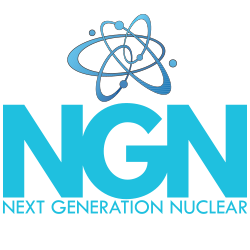

Uranium (U-235) is the most well-known fuel and the most in use, but certainly not the only choice. Staring with uranium for comparison, it is extremely energy dense and about one million times greater than that of traditional energy sources. A one-inch pellet of uranium is equal to 17,000 cubic feet of natural gas,149 gallons of oil or 1 ton of coal. U-235 is also the only naturally occurring material that can sustain a fission chain reaction. Although uranium is about 100 times more common than silver U-235 is only about 0.7% of natural uranium, the raining 99.3% is U-238 which does not directly contribute to the fission process. Uranium is found in nearly all rock, soil, plants, and water in varying amounts.
The majority of the world’s 500 reactors require uranium to be enriched from 0.7% to 3-5% U-235 in their fuel. This is referred to as low-enriched uranium (LEU)
Thorium is an abundant resource within the Earth’s crust found at levels three times higher than uranium and requires no enrichment.
Looking at energy density, the European Organization for Nuclear Research, estimates that one ton of thorium can produce as much energy as 200 tons of uranium, or 3,500,000 tons of coal.
Thorium is not fissile, however it is fertile, when it is exposed to neutrons, it will undergo a series of nuclear reactions until it eventually emerges as an isotope of uranium called U-233, which will readily split and release energy next time it absorbs a neutron. This chain reaction very easy to control and can be shut down by ceasing its supply of neutrons. When thorium is used in a breeder reactor no other fuel is required to be added as the reactor creates its own, producing as much fissile material as they consume.
Thorium is not currently being used as a commercial source of nuclear fuel and instead left as waste after mining for rare earth minerals and metals. It is estimated 90,000 tonnes per year (99,000 US tons) could be recovered from active mines, satisfying all the world’s nuclear reactors more than six times over.
TRISO which stands for tristructural Isotropic particle fuel, are kernels approximately the size of a poppy seed. Each particle is composed of a uranium, carbon and oxygen fuel kernel encapsulated by three layers of carbon and ceramic based materials. The material prevents the release of radioactive fission products and are extremely robust. The kernel is housed is what is referred to as a “pebble”, the pebble houses tens of thousands of TRISO particles and is about the size of a billiard ball. The result is a perfect transport, fuel, and storage container.
TRISO particles cannot melt in a reactor and withstand temperatures well beyond the threshold of current nuclear fuels.
CCR (Coal Combustion Residuals) are already available in ample amounts and currently are being stored on site at existing coal plants. It’s a fact that a 1000 MWe coal plant will generate about 13 metric tonnes (14 US tons) of thorium per year in its ash. Given that one tonne of thorium can generate 1000 MWe in a thorium reactor, it’s feasible the waste from one coal plant could potentially provide fuel for 13 thorium reactors of equal power.